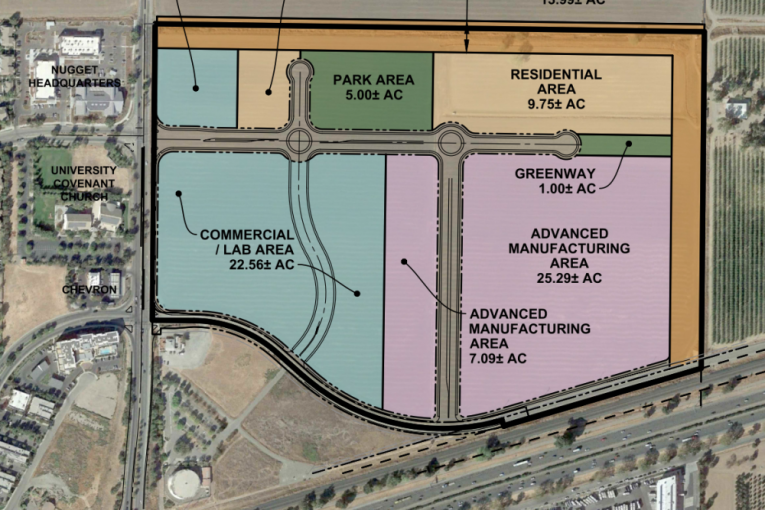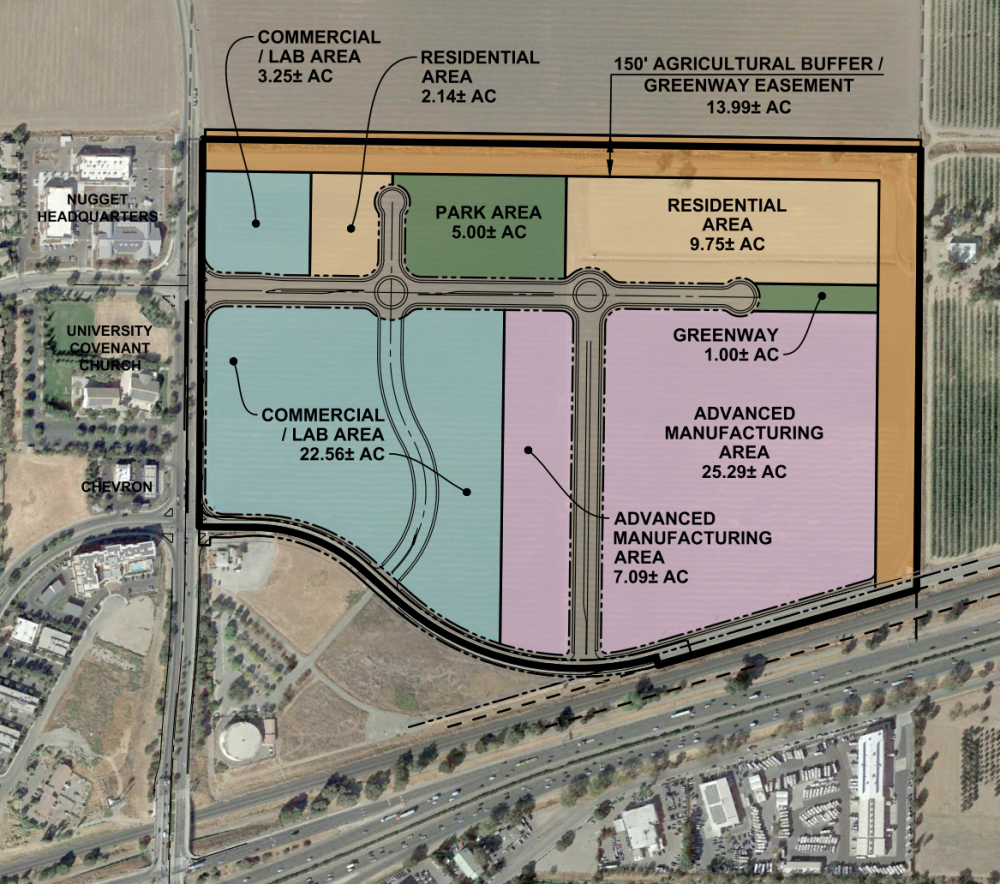
 By Ben Wynd
By Ben Wynd
Davis, CA – With ballot arrival day fast approaching, the battle over DiSC is heating up. After initial statements by proponents and opponents of Measure H were released, the campaigns proceeded to release their rebuttals to the other side’s arguments. Accusations of misinformation by each side consumed these statements.
The Yes on H campaign bluntly begins their statement with “Statements by opponents of Measure H are false,” and ends it with “opponents are intentionally misstating the facts about the environmental benefits, economic advantages and traffic impacts,” with a myriad of reasons why in between. The campaign hits back at the validity of the project and states:
YES ON H is fully compliant with the Davis General Plan. It couldn’t be on the ballot otherwise.
They also address accusations that DiSC will damage business in downtown Davis, and assert:
YES ON H helps our downtown by generating $50 million in economic stimulus annually for existing Davis businesses. New retail space can be built only when there’s enough demand onsite to support it,  protecting existing businesses.
protecting existing businesses.
On housing, they push the idea that newly constructed affordable housing will be a revenue generator for schools (implied via property taxes) and housing and argue:
YES ON H will help meet the demand for affordable housing for young families. Declining enrollment in Davis schools has been a pressing issue as of late, so it’s unsurprising this is an issue to be focusing on. Climate change, an issue polls and focus groups show particularly resonates with voters, engulfs almost half of the rebuttal.
The “Yes” campaign claims:
YES ON H advances some of the most innovative and progressive concepts ever proposed for Davis.
These concepts, including carbon neutrality by 2040, using 100% renewable energy onsite, and improving habitat for threatened species are a few of the key climate-based components listed.
The campaign addresses the improvements to make walking, biking and driving easier in South and East Davis, an issue of particular concern to residents. They remind that all commitments made are “legally enforceable in a court of law.”
The opposition starts off with a dig at developers, a group often portrayed as unfaithful to commitments by the “No” campaign. They argue the city council will turn a blind eye to broken commitments by developers if that conflict materializes. In terms of housing, the opposition states:
The majority of DiSC housing will be high-priced, market-rate. Meanwhile, DiSC touts environmentally-friendly “live-work” but refuses to reserve any housing for employees. Furthermore, promised low-income housing at DiSC barely meets the City’s already meager requirement.
The theoretical failure of housing in this way integrates with their argument that “12,000 additional car trips/day will produce 78% of DiSC’s greenhouse gasses.” They essentially argue that no reserved units for employees would entail more driving, and in turn more pollution. No on H proponents are also asserting that the construction of DiSC is on “100 acres of Prime Farmland,” so no endangered species are realistically protected.
The premise of the project (job creation/retention) is criticized by the “No” campaign because:
Not a single company has committed to DiSC yet. Companies could be environmentally damaging, not green, nor high-tech, nor high-paying. Claims that they will “solve the world’s greatest challenges” are ridiculously exaggerated. UC Davis has NOT endorsed DiSC. Plus the Developer has NOT publicly committed to unionized jobs that offer real living wages.
Finally, they claim Davis and its schools only receive 15-20% of property and sales taxes collected, with the rest going to federal and state.
The rebuttals’ accusations of misrepresentation and misinformation are unsurprising in today’s political climate, even at the local level. As election day looms, the campaigns are doing all they can to get voters engaged and on their side.






Personally, I would have added that (assuming that the commercial component is successful), DiSC will create a housing shortage.
The EIR itself notes that demand will be created for 1,729 housing units, with only 460 provided onsite.
DiSC is just the beginning of what’s being proposed beyond the Mace Curve area (which includes Shriner’s, Palomino Place, eventually – the “other half” of DiSC, the space inside of the Mace curve . . .
I’m failing to see what the “net gain” to the city is, when looking at all of this. (Other than a gain in population.)
I only see loss – of open space/farmland beyond a logical boundary for the city, crushing traffic, greenhouse gasses, etc.
As I recall, there are more than 2,000 parking spots planned for this development. How many will there eventually be on the “other half” (let alone for the other developments proposed in that same area).
None of the cumulative impact has been analyzed or accounted for.